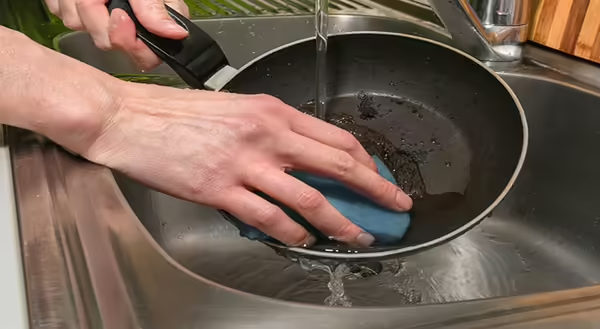
What are PFAS chemicals?
Per- and polyfluoroalkyl substances, called PFAS (pronounced pea-fass) for short, are a group of more than 15,000 man-made chemicals that have recently made their way into the news for all the wrong reasons. PFAS is an incredibly useful group of chemicals sometimes added to products to help them resist grease, oil, water, and heat. As a result, they are found in a wide array of consumer goods including clothing, cosmetics, food packaging, carpets, cookware, and cleaning products. There is a lot of information out there about this group of chemicals that has sparked discussions about environmental and public health, but should we worry? Let’s see what the science says.
Why do we care about PFAS?
As a result of their widespread production and use, these chemicals have made their way into soils, lakes, rivers, streams, and drinking water across the country. Unfortunately, PFAS can be readily absorbed into skin and digestive system when organisms come into contact with them. They break down slowly and can accumulate in aquatic organisms as well as people. The harmful effects of PFAS are broad and include increased risk of certain cancers, kidney and heart disease, and reproductive issues like low birth weight and birth defects. According to a recent press release from the U.S. Environmental Protection Agency, no level of PFAS exposure comes without risk to human health.
How do we reduce our risk from PFAS chemicals?
It’s not easy - they are ubiquitous in the environment and at one point in the early 2000’s, scientists from the National Institutes of Health found one or more PFAS chemicals in 98% of human blood samples. But there are some simple ways to reduce your exposure and protect your health.
- Replace any nonstick pans at the first sign of scratches and do not heat beyond the recommended temperature (typically ~400℉). If possible, avoid the use of nonstick cookware altogether and opt instead for stainless steel, cast iron, or ceramic.
- Microwave popcorn bags, takeout containers, and fast food packaging can be coated with PFAS to prevent sticking - be a cautious consumer and do research before eating food from this packaging.
- Avoid stain-resistant carpets, upholstery, and other fabrics. Vacuum regularly to remove PFAS that can accumulate in dusty fabrics.
- Leave your shoes at the door to avoid tracking chemicals into your home.
- Check advisories before eating locally caught seafood.
- Contact your public water utility about whether your drinking water has been tested for PFAS. If you are on a private well, conduct regular testing. Consider an at-home water filtration system if you remain concerned about the PFAS level in your water.
Recent federal legislation has begun to address PFAS contamination across the country, most recently by instituting federally enforceable limits on PFAS in public drinking water that should result in safer drinking water in the coming years. But with the myriad sources of PFAS in consumer products, it is also helpful to be cautious and take simple steps to reduce your exposure.
How can I learn more about PFAS?
Visit one or more of the following websites to learn more about PFAS: